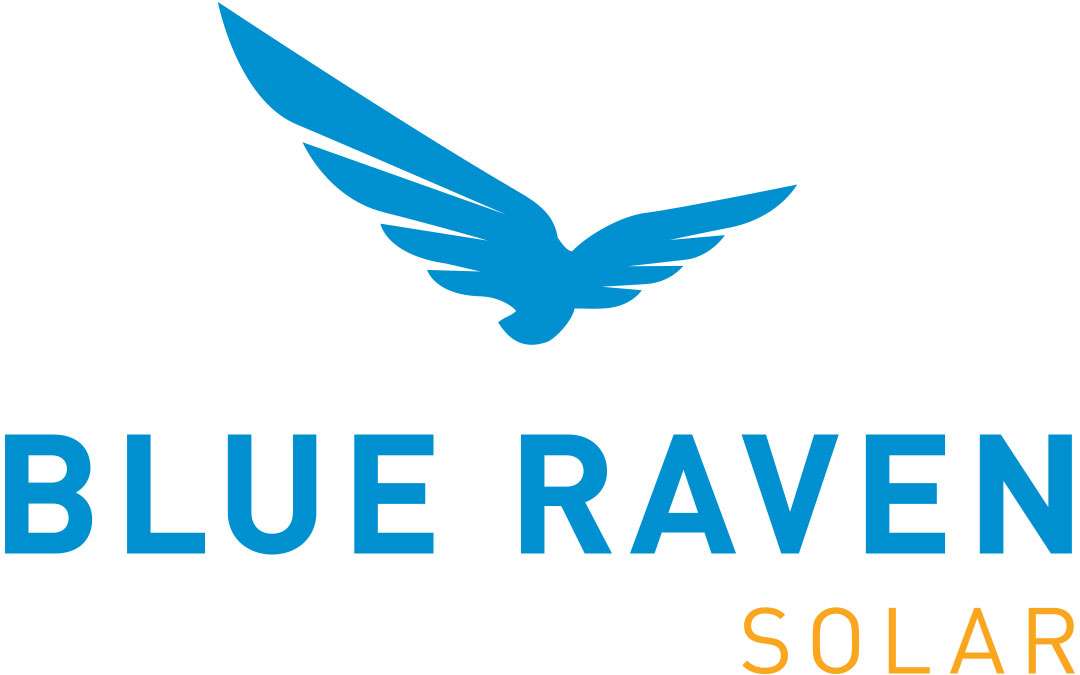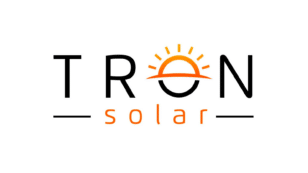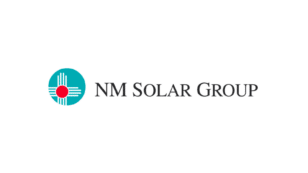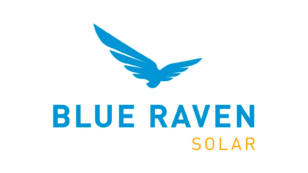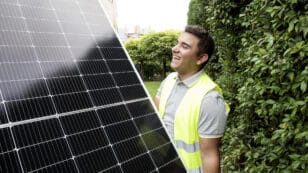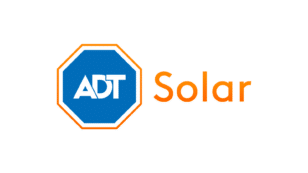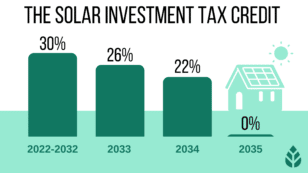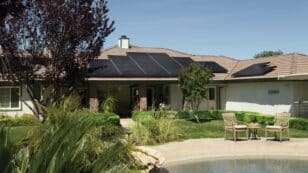

Palmetto Solar Review: Costs, Quality, Services & More (2024)
Here’s what you need to know about Palmetto Solar:
- Is Palmetto Solar a legit provider?
- How good are Palmetto’s solar panels?
- What should I expect working with Palmetto?
- What is the average cost of installing solar with Palmetto?
Each product and or company featured here has been independently selected by the writer. You can learn more about our review methodology here. If you make a purchase using the links included, we may earn commission.
When it comes to choosing a solar panel installation company, most people will have plenty of options to choose from. While options are great, they can make decisions difficult. Our Palmetto Solar review below should help you decide if this solar company is a good choice for your needs and expectations. We’ll dive into the company overall, its pricing, availability, value and more.
Is Palmetto Solar a Good Solar Company?
Palmetto Solar is a great company for solar panel installation, and it consistently ranks as one of our most highly rated solar installers in the country. Palmetto provides a wide range of solar and energy efficiency services, includes outstanding warranty coverage, maintains an excellent reputation for customer service in most areas and has a massive service across in the United States.
What Should You Know About Palmetto Solar?
Palmetto Solar was founded in 2010 by the current owner, Chris Kemper. The company’s mission is to bring affordable solar and the opportunities of the clean energy economy to everyone. Along with the positive environmental impact the company provides, Palmetto also seeks to help homeowners become energy independent while saving money on electric bills with renewable energy.
Palmetto has quickly expanded to cover 24 states and the District of Columbia and has plans for continued growth. Its business model includes independently owned offices throughout the country, so customer service can vary slightly based on your location. Still, the company has maintained a reputation for good customer support for over a decade. It also has accreditation from the North American Board of Certified Energy Practitioners (NABCEP) and the Better Business Bureau (BBB).
| Palmetto Fast Facts | |
| Year Started | 2010 |
| Service Areas | 24 States and the District of Columbia |
| Services Offered | Solar panel and solar battery installation; energy efficiency upgrades; solar equipment maintenance and repair |
| Certifications | Technicians certified by the NABCEP; accreditation by the BBB |
| Better Business Bureau Rating | A+ |

Palmetto Solar

Regional Service
Average cost
Pros
- Expansive service area
- Comprehensive service offerings
- Offers Lease/PPA options
Cons
- Quality of installation may vary by location
Palmetto Solar Services and Installation
When you choose Palmetto Solar to complete your solar conversion, you’re signing up for an easy process that a representative will walk you through every step of the way. The process of going solar will be somewhat similar regardless of the installer you choose, but we’ll break down the experience you can expect with Palmetto Solar below.
You can also watch the video below for a quick glimpse into Palmetto’s process and culture.
Palmetto Solar Services Availability
Palmetto Solar is currently available in 24 states including: Arizona, California, Colorado, Connecticut, Florida, Georgia, Illinois, Maryland, Massachusetts, Michigan, Missouri, Nevada, New Jersey, New York, North Carolina, Ohio, Pennsylvania, Rhode Island, New Mexico, South Carolina, Texas, Utah, Virginia, and Wisconsin) and in the District of Columbia.
The company plans on expanding into additional states as well. Palmetto Solar’s phone number is (855) 339-1831.
Solar Installation Experience
The steps below are specific to Palmetto Solar, although many apply universally.
Step 1: Request a Free Quote Online
Your first step to going solar with Palmetto will be to fill in the company’s contact request form on its website (Palmetto.com) to get a free quote. Palmetto uses some basic information and satellite imaging of your home to determine your estimated energy bill savings.
Step 2: Home Assessment
Next, a sales rep from Palmetto will reach out to you to discuss your energy consumption, your expectations and your home. This contact will usually be a video call, and you should have a copy of your most recent utility bill handy. You might also need basic information about your HVAC (heating, cooling and ventilation) equipment, appliances and other major electronics.
The second part of your home assessment will typically take place in person when a rep measures your roof, inspects your breaker box and confirms details gathered over the video call.
Step 3: Design and Installation
The next step is for the Palmetto Solar design team to design your solar system, including the panel layout, the location of the solar batteries, if applicable, and the routing for the electrical work to be completed. Once you approve the design, Palmetto will start to pull permits for the system.
As soon as the building permits are approved, the installation will be scheduled. The installation itself usually takes a day or two, depending on the weather and the size of your system.
Step 4: System Activation
Finally, the installation crew will commission your system (commission basically means double-checking the installation). Once you’ve received permission to operate (PTO) from your utility, your solar panels will start producing energy for your home, and you will start to enjoy your energy savings. Your rep will still be available to answer questions about your solar panel system, help you take advantage of rebates and solar incentives and help maximize your solar savings.
Palmetto Solar Customer Service
Palmetto Solar is a great company, in part because it upholds a high standard for customer service. Most solar customers are very pleased with the service they receive from Palmetto, and a number of reviews online rave about the communication and follow-up from the initial call to the installation day and beyond. It should be noted that each Palmetto Solar location is independently operated, and the decentralized service model can lead to varying customer experiences based on location.
Palmetto Solar Costs and Financing
The cost of installing solar panels can vary significantly based on a number of criteria, including your solar power system size, your energy needs, shading on your roof and more. The national average price per watt for solar panels is around $3.33, with the cost of most systems falling between $13,986 and $27,972 after the federal solar investment tax credit (ITC).
While every customer’s price will be different, Palmetto’s pricing usually falls around the average for the area. Palmetto Solar is considered such a great option in part because the average price to go solar gets you great customer service and some of the most efficient solar panel brands available in the industry.
A key part of Palmetto’s mission is to bring affordable solar to everyone. The company accomplishes this by providing average pricing for solar products and helping customers get solar loans they can afford. Palmetto accepts cash purchases and loans only, and there are no options for solar leases or power purchase agreements (PPAs). However, these options aren’t recommended anyway in most cases.
Financing Options Through Palmetto Solar
The table below offers a quick look at the financing and purchase options offered by Palmetto Solar.
| Cash Purchase | Solar Loan | |
| System Ownership | ✓ | ✓ |
| Upfront Cost | ✓ | Varies |
| Added Property Value | ✓ | ✓ |
| Eligible for Tax Credit | ✓ | ✓ |
| Payment Due to | Solar Installer | Loan Provider |
If you’re unsure what financing option is right for you or if going solar will fit into your budget, we encourage you to check out our solar financing guide for more information on your options.
Palmetto Solar Solar Panel Warranty
Given how expensive solar panels can be, warranty coverage is something most solar customers look for from an installer. Solar panel warranties can be all-inclusive, but most either cover equipment (for damage to panels, inverters and batteries as well as power production) or workmanship (for the installation process).
Palmetto Solar offers an excellent 25-year warranty that covers both equipment and labor. Most panel defects or damage will be covered, as will issues with the installation process. You’ll also get a guarantee that your panels will continue to produce sufficient energy for 25 years.
Palmetto Solar Reviews
Many prospective solar customers look at other customer reviews online to determine what kind of experience they can expect by choosing a specific company. This is a great place to look for company feedback, as it’s almost always unbiased and raw. We’ll include some of the most helpful positive and negative Palmetto Solar reviews below.
Positive Palmetto Solar Reviews
The majority of the reviews you’ll find online for Palmetto Solar are positive, which is a great sign and usually indicative of excellent customer service. Below are some of the positive reviews that other customers found most useful.
“I had an excellent experience with Palmetto. The salesperson was very knowledgeable and answered all of the questions I had […] I got text messages throughout the process keeping me informed, and I could track the status of the project in the app.I could not have been happier with the installers who put the system on my roof. I have a 90- year-old brick house and had a preference for where the external conduit should be run and they were able to accommodate no problem. Highly recommend!” — Jason via Google Reviews
“We had a great experience with this company, starting with the salesperson, throughout the entire process, and ending with the installation team. Jessica was always available to answer any questions and explained things clearly. The installation team was wonderful […] The guys were professional, clean and efficient. It took them right about four hours to complete installing 29 panels and do the work on the side of the house. Everything looks neat, they explained things clearly and answered all of our questions. Would highly recommend this company.” — Rosa via Google Reviews
Negative Palmetto Solar Reviews
As with any company, there are also some negative reviews that you’ll find online for Palmetto Solar. As mentioned before, each Palmetto Solar office is run independently, so customer service can vary. Below are some of the more negative Palmetto Solar reviews.
“Please do not go with Palmetto Solar as your solar provider. We had numerous issues with our install. The door-to-door salesperson is a contractor. The folks that will come to install your panels are also contractors that do not care about how good their installation is. […] Lots of modifications were made on-site […] We failed our fire inspection. Our roof was damaged. It took almost a year from start to finish because of all of their mistakes.” — Jennifer via Google Reviews
How Does Palmetto Compare to Other Solar Installation Companies?
Palmetto Solar ranks quite highly on our list of the highly esteemed solar companies in the country, but how does it stack up against the other top providers? The table below gives a quick side-by-side comparison of Palmetto and two of the best national solar companies, SunPower and Momentum Solar.
| Palmetto Solar | SunPower | Momentum Solar | |
| Year Started | 2010 | 1985 | 2009 |
| Services Offered | Solar panel and battery installations; energy efficiency upgrades; solar maintenance and repair | Solar panel, solar battery and EV charger installations; solar monitoring | Solar panel and battery installations |
| Service Areas | 24 States and the District of Columbia | Nationwide | 11 States |
| BBB Rating | A+ | A+ | A+ |
| Payment Options | Cash payments, solar loans | Cash payments, solar loans, solar leases, power purchase agreements (PPAs) | Cash payments, solar loans, solar leases, power purchase agreements (PPAs) |
The cost information presented in this article is derived from a comprehensive analysis, incorporating data from multiple industry sources. The average cost per watt per state was calculated based on figures from Consumer Affairs, Energy Sage, and Berkeley Lab’s Electricity Markets & Policy Department. Additionally, monthly energy consumption and the average monthly cost of electricity were sourced from the U.S. Energy Information Administration, ensuring a well-rounded and accurate representation of the information presented.
Frequently Asked Questions
Below we’ll answer some of the questions we get most often about Palmetto Solar. If you have specific questions that aren’t answered here, reach out to our team of solar experts at solar@ecowatch.com.
Yes, Palmetto Solar is a legit company with over a decade of experience and success stories behind it. In fact, Palmetto Solar regularly ranks on our list of the best solar companies in the country. It provides affordable solar solutions to 24 states and the District of Columbia, has a history of good customer service and installs some of the best solar panel brands in the industry.
Yes, Palmetto Solar offers excellent value. Not only does the company come in around the average in terms of price, but it also installs high-quality solar equipment, provides great customer service and provides outstanding warranty coverage that will bring any solar customer peace of mind.
In most cases, yes. Palmetto Solar installs high-efficiency equipment that produces energy to offset your electric bills. Most customers will see a significant reduction in the electricity they pull from the grid and, consequently, their energy bills. In areas where there are favorable net metering policies, it’s quite possible that you can eliminate your electric bill altogether.
Installing solar panels will always be somewhat costly, but choosing Palmetto Solar will place your total costs around the average. More importantly, most customers feel the value they receive when choosing Palmetto for their solar conversion is well worth the cost, as it’s one of the best companies in the solar game.
solar provider reviews
- Sunpower Review
- Tesla Review
- Sunrun Review
- Momentum Solar Review
- Titan Solar Review
- Sunnova Reviews
- Encor Solar Review
- Semper Solaris Review
- Solar Optimum Review
- Sun Services Review
- Solanta Review
- Risingsun Solar Review/ Astrawatt
- Tron Solar Review
- Trinity Solar Review
- Sierra Pacific Solar Review
- Seal Solar Review
- Green Home Systems Review
- Nm Solar Group Review
- Ion Solar Review
- Grne Solar Review
- Enlite Home Review
- Suntuity Solar Review
- Elevation Solar Review
- Diablo Solar Review
- Bright Planet Solar Review
- 1st Light Energy Review
- Solar Sage Review
- Big Dog Solar Review
- Windmar Solar Review
- Solgen Power Review
- Trismart Solar Review
- Vision Solar Review

 233k
233k  41k
41k  Subscribe
Subscribe 


